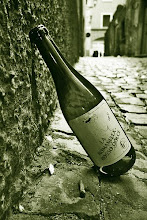Wedding Music - Successful Sound Suggestions for the Thinking Bride
About the Author: Nicholas A. Ditri is the Co-Owner and President of Alpha Omega Entertainment, LLC of Howell, NJ. He has been involved in organizing entertainment for numerous fundraising events across New Jersey and has entertained at over 350 events in the past 5 years.
There is an old saying “the key to a great song is a good lyric”, but unless you are looking for a sing-along at your wedding, there are a variety of other factors which will invite your guests on the dance floor.
A great lyric can only take us so far and that’s where the volume, rhythm and tempo take over to either make your wedding reception pulsate or be put to sleep. Save the lyrics for your first dance with the lucky man, but watch the volume, understand rhythm and dictate the tempo for a wedding to remember.
Cocktail hour and dinner are a vital time during your reception to set the mood and make certain your guests are comfortable in their environment. Sacrificing your personal song preferences can sometimes be a benefit at these times, for if your tastes drastically vary from your guests, you will have a disconnect.
Music volume is the most significant factor in the comfort level of your audience. Volume is measured in decibels where 130 dB is the threshold of pain and 0 dB being the sound of a mosquito flying about 10 feet away. Where is the best spot to set your cocktail hour mix? Depending on the size of your crowd and room acoustics, it should sit in the 30-50 dB range, permitting a background sound. A level where you can easily let your friends and family mingle, converse together, and share thoughts about how beautiful the bride is. During the reception, an average “danceable” range of volume should be in the 90 dB range. The entertainment should make sure not to exceed levels of 110 dB which can cause ear damage, and chase your guests to corners of the room away from the speakers.
Entertainers often will bring a sub-woofer, which is an additional speaker that strictly emphasizes the bass response of their sound system. While in most cases this is effective to give a more wholesome feel to the music, it can often result in a muddy sound, drowning the vocals with an excessively booming bass. However, with insufficient bass, or “low frequency roll-off,” as it is sometimes called by audiophiles, you will be left with lifeless music resulting in thin mixes throughout the night. Thin mixes often sound glassy and cutting, thus resulting in temporary or even permanent damage to the ear. Even the most high end sound systems can have a thin mix if the right DJ isn’t behind the control boards, doing what he or she should be trained in extensively.
Once your volume is set, fixing the rhythm will likely be key factor in which guests make it to or stay on the dance floor the entire night. Even if heavy metal is your personal music preference, to have a memorable wedding where everyone was dancing, opening the dance portion of the event with a high energy Latin track usually appeals to everyone. Latin rhythms such as salsa, is a mixture of traditional Cuban, African and other Latin-American rhythms that traveled from the Carribean to New York in the 1940’s. The dance steps usually integrate swing dance moves along side foot patterns always stepping on the beat of the music. Songs such as Cup of Life by Ricky Martin and Let’s Get Loud by Jennifer Lopez usually do the trick to get those salsa lovers on the floor. Once those salsa lovers are out there, they tend to make the rest of the crowd get out of their seats. An experienced entertainer will know how to read your crowd and vary the rhythms of the night based on their requests, attire, demographics and personalities.
Tempo can be just as important as rhythm in keeping your guests motivated to slow dance, go back to the bar, or keep their hips shaking. Tempo is measured in beats per minute, abbreviated as BPM. The common tempo for a funky dance track is around 130 BPM while a slow dance can be listed around 70-80 BPM. Having an older crowd in the ages of 65 and up will usually require songs in the 90-100 BPM range including such as the standards of Frank Sinatra and certain Motown hits. Not only do they appeal to this age group as far as it being their “decade of music” but the tempos do not exceed a level of energy that they simply can not maintain.
In essence, searching for the right entertainment should be a search for an experienced entertainer. Laying out the form of your event should include a series of song suggestions to the DJ, always including general ideas of your rhythmic sets. These sets can incorporate anything from top 40 club, euro-trance, hip-hop, disco, to Motown, salsa, bachata and even easy listening for your cocktail hour. Always make sure to speak with your entertainment company about their knowledge of volume and song organization for an event. This makes sure that they know you are an educated consumer, and nothing less than a thinking bride!
Nicholas Ditri
www.imemoryfilms.com
info@imemoryfilms.com
818.760.9490
For more great wedding tips, ideas, and info, visit us at www.imemoryfilms.wordpress.com
Tuesday, March 8, 2011
Great Wedding Music 101
Subscribe to:
Post Comments (Atom)




No comments:
Post a Comment